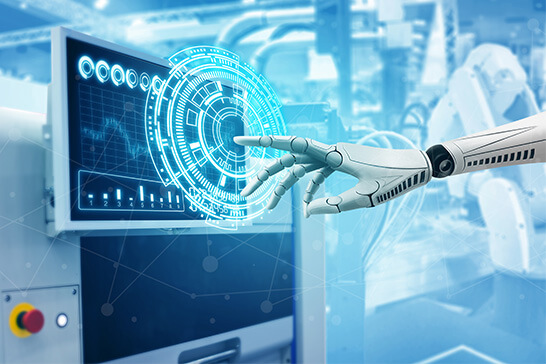Seven challenges for mechanical engineering
Times are challenging in the mechanical engineering sector and low margins are presenting the industry with challenges.
Digitalization offers greater transparency, process stability, efficiency and new business models, but in particular medium-sized companies still often lack a digitalization strategy.
We have summarized seven fields of action. A digitalization initiative leads to an innovation drive because this is also where many companies are lacking. Some companies have ideas, but there is a lack of implementation. And some also lack inspiration.
1. Medium-sized machine manufacturers need a data strategy, whether it’s for a networked machine park or individual workstations. The big players have such a strategy.
Many mechanical engineering companies are now focusing on data and making it the core of their digital strategy. Competitors are thinking about new processes or business models based on data. Among other things, this involves understanding data, making it available and the quality of the data.
It’s important to define who do I share the data with, when and how. Also, which business models can I use to set it up?
2. Real-time simulation is the second challenge faced by mechanical engineers. Hardware and simulation must be fully synchronized. This speeds up commissioning, avoids errors, reduces costs and saves time.
3. Identify opportunities from regulations to make your processes more transparent using data. Address requirements like the Digital Product Passport and come up with ideas to improve efficiency.
4. AI is more than OpenAI and ChatGPT. Many companies start a proof of concept but often get stuck in this phase.
They struggle to understand reinforcement learning. In this approach, an AI agent learns by interacting with its environment and trying different actions to see what works. It learns to differenciate rules and optimizing problems. You try to solve an optimization task with reinforcement learning.
They turn a simple problem into a big problem, often only because there are tools for complex problems. There is a lack of broad industrialization of AI use cases. A new breed of service provider will therefore emerge: AI integrators. However, many companies are clearly finding it difficult to track down use cases.
5. AI is changing processes, but also organizations. People who currently perform tasks without AI will have to actively utilize the technology in the future. This means there will be a shortage of skilled labor, and the existing workforce will have to take on new, different tasks. Most mechanical engineering companies need to thoroughly train their employees and create new job profiles.
6. There is a lack of digitalization or AI talent. There is often confusion between mechanical engineers and AI experts.
When companies want to start using AI for their products, they usually hire three PhD candidates first. However, PhDs want to do research and not necessarily develop a market-ready product.
A tip: mechanical engineers must develop collaboratively across company boundaries if resources are lacking. In addition, many companies lack an open-source strategy for using software and working together on development projects. Basic developments no longer need proprietary systems.
7. OT and IT belong together. Companies need to strengthen their IT capabilities as the lines between different areas blur. This means having modern hardware that meets current IT needs. But also understanding the basics of cyber security and its importance for their business. Machine builders need to develop a patch strategy and implement new cyber regulations.
The tasks faced by mechanical engineers are huge, but not insurmountable. However, mechanical engineering will not be able to avoid collaboration with suppliers and even competition.
It is important to consider the digitalization of the business model and cyber security right from the product development stage. It also helps to develop ideas together with customers and get suppliers on board. Lenze favors collaboration with its customers and develops solutions for mechanical engineering together with them.



